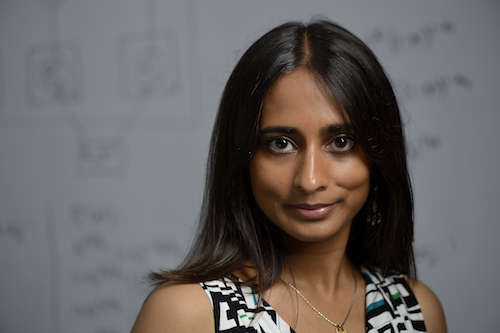The National Science Foundation (NSF) has awarded John C. Malone Assistant Professor Archana Venkataraman $875,000 in grant funding to support a three-year research project to develop a mathematical framework that will detect subsystems in the brain that are altered in the presence of a neurological disorder.
Venkataraman’s lab, the Neural Systems Analysis Laboratory (NSA Lab), focuses on building a comprehensive and system-level understanding of the brain by strategically integrating computational methods, such as machine learning, signal processing and network theory, with application-driven hypotheses about the brain. Based on this approach, Venkataraman and her team aim towards a greater understanding of debilitating neurological disorders, with the long-term goal of improving patient care.
The specific project she proposed to the NSF, “Discovering Network Structure in the Space of Group-Level Functional Differences,” takes an entirely new look at brain pathology by trying to link the heterogeneous patient manifestation of a neurological disorder to altered neural signatures in functional neuroimaging data.
According to the grant’s abstract, the investigators will conduct the project in three stages. First, they will develop a core model of network-based functional differences via two complementary topologies. Next, they will broaden this core framework by incorporating structural information and by estimating time-varying network differences. Finally, the team will take a data-driven approach to the network estimation based on semi-supervised representation learning. Results from the project will ultimately lead to a new computational platform which can be leveraged by other researchers in the field.
Venkataraman says the project will address key clinical questions related to three of the most prevalent neurodevelopment disorders: autism, ADHD, and schizophrenia. This work will be done in collaboration with investigators at the Kennedy Krieger Institute and the Lieber Institute for Brain Development.
“The human brain is the ultimate black box. While traditional methods provide glimpses into its structure and function, we will ultimately need system-level tools to decipher it. This is where engineering can play a big role in neuroscience, ” says Venkataraman.
The project is funded by the Collaborative Research in Computational Neuroscience (CRCNS) program, a joint initiative among six National Science Foundation (NSF) Directorates and Offices (DOs), and nine participating National Institutes of Health (NIH) Institutes and Centers (ICs). The CRCNS program supports collaborative activities that will advance the understanding of nervous system structure and function, mechanisms underlying nervous system disorders, and computational strategies used by the nervous system.
